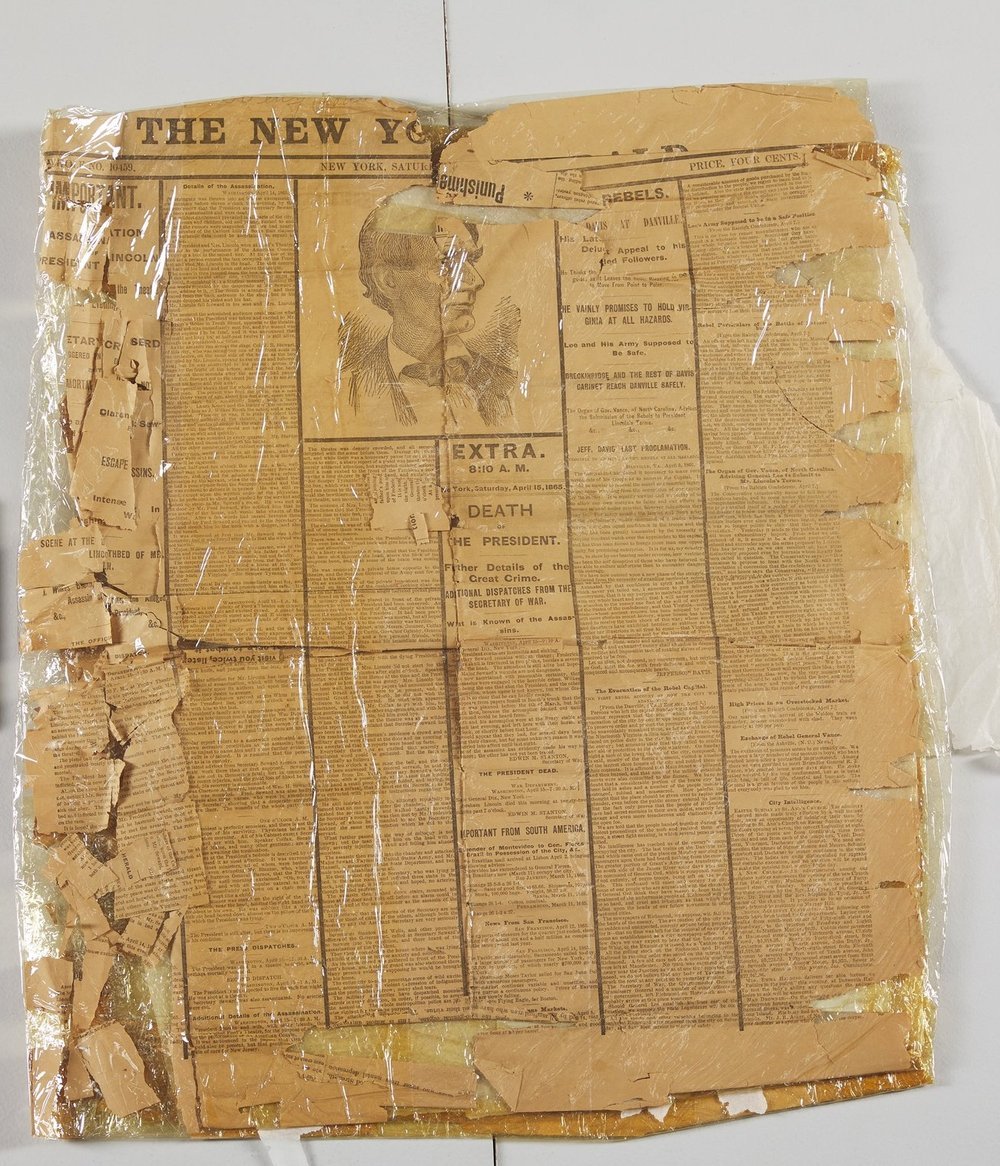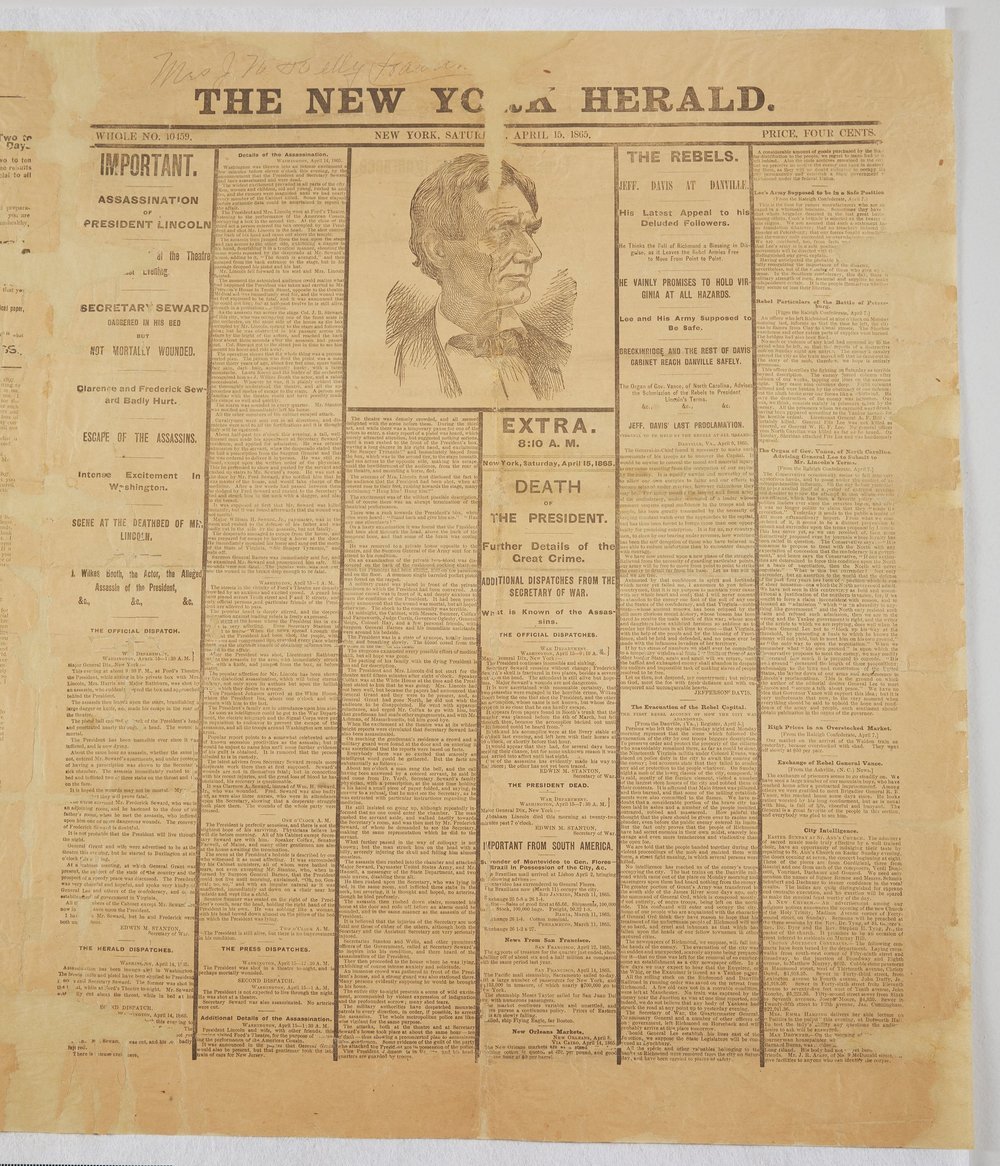Newspapers serve as a historical record, documenting the events, stories, and perspectives of a particular time and place. They capture a society's social, political, economic, and cultural dynamics, providing valuable insights for researchers, historians, and future generations. Newspaper archives are a rich primary documentation source, offering a firsthand account of historical moments and societal changes. But ironically, newspapers are not made to last.
The New York Herald April 15, 1865, before treatment
Newspapers are made from low-cost short-fibered paper and quick reproduction methods that make their long-term survival a rarity. The short-fibered paper has good absorbency properties, making it suitable for applications where ink or liquids, such as newsprint, must be quickly absorbed. However, short-fibered paper tends to have lower tensile strength and durability than long-fibered paper. The shorter fibers do not interlock as effectively as long fibers, resulting in a weaker paper structure. This weakness leads to the fracturing seen in this 1865 newspaper announcing the death of President Lincoln.
The New York Herald April 15, 1865, before treatment
Katrina Flores, Associate Conservator of Works on Paper, began the painstaking task of piecing together this puzzle of newspaper fragments. The hundreds of pieces were removed from the plastic wrap it had been stored in, using tweezers to handle the smallest fragments. Katrina carefully cleaned each piece with a soft brush and textile sponge, and the larger fragments underwent passive humidification to reduce the distortion before being pieced together. Then, the arduous task of putting the puzzle back together began. Katrina repaired the tears, and the loose fragments were reattached using thin Japanese tissue and wheat starch paste.
The New York Herald April 15, 1865, after treatment, verso showing the Japanese tissue paper strips.
While most of the newspaper was present, there were areas of complete loss where fragments were missing. To address the losses, Katrina toned chochin Japanese paper with acrylics to match the color of the newspaper, which was then used to fill the loss areas. Now reassembled, the entire sheet was again passively humidified to reduce the remaining distortion further. Katrina then treated the whole sheet with a deacidification spray and encapsulated it within Mylar to help protect the paper.
The New York Herald April 15, 1865, after treatment
Newspapers provide a valuable source of information and knowledge. Not only do they provide up-to-date news and current events, but vintage newspapers give the reader a view of the past. They provide a glimpse into the past and can shed light on how people lived, what they cared about, and - like this conserved newspaper - the significant events that shaped their world.
The New York Herald April 15, 1865, after treatment









